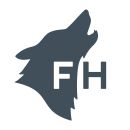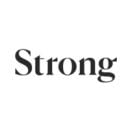In the ever-changing world of tech, it can be challenging for tech leaders to decide which new systems to implement or projects to prioritize to stay on top of industry trends and shifts. Tech teams, and especially their leaders, have to work diligently to stay abreast of the market and what’s best for their company — and they do so in a wide variety of ways.
In part one of this two-part series, we spoke to tech team leads at seven companies to learn more about the resources they use to stay knowledgeable, as well as the projects they’ll be working on this year.

With its data-driven credit scoring algorithm, Opploans works to provide loans to consumers that traditional banks may ignore. CTO Andy Pruitt said he’s working to give his engineering team more tools that will allow them to quickly create and experiment with new developments they conjure up.
How do you stay ahead of shifting tech trends, and what new technologies are you eyeing for future projects?
I’ve found that the hardest part isn’t hearing about new tech, but recognizing whether it is going to be relevant to the challenges we are facing. Staying involved in technical design work has helped me to better recognize a good fit when I hear about it. I’m learning about tech through the internet, but I’ve also come to value conversations with other CTOs at the Chicago CTO Group.
I’m looking forward to implementing a service mesh like Istio to tie together our increasingly complex microservice environment. We’re seeing more crosscutting concerns around security, routing, capturing test traffic and doing transaction level monitoring — we have high hopes that a service mesh will help.
Our biggest area of focus is to further automate the approval process for new loans.”
What are the biggest tech projects your team is working on this year?
Our biggest area of focus is to further automate the approval process for new loans. This means not just automated approvals and workflows for loans, but also connecting to a large number of outside data and verification services. These services are critical for getting the information we need to differentiate good risks from bad and to tell real applications from fraudulent ones.
We’re also making a huge investment in our AWS infrastructure. Our devops team can add a new test environment with all of the required microservices at the push of a button. That investment means developers can create a new feature and have the confidence to put it into production immediately. Our test systems and monitoring are robust, so we can quickly and easily rollback if there is an issue in production.

Civis Analytics helps companies solve some of their toughest business challenges via its cloud-based data science software that helps them take action from their data. Lead DevOps Engineer Chris Perry said his team is working on scaling its use of Kubernetes this year.
How do you stay ahead of shifting tech trends, and what new technologies are you eyeing for future projects?
It’s important that my team feels empowered through an internal culture that values collaboration, experimentation and continued learning. During quarterly hack weeks, we do self-directed experimentation on greenfield technology. We also host technical book clubs to foster discussion about relevant topics like site reliability engineering best practices or technical leadership.
We do a lot with Kubernetes, so I'm always looking for new ways to leverage that. We run a lot of legacy tooling on bare metal EC2 and we will be doing some work to containerize some of that infrastructure to run in Kubernetes. I'm excited to take a look at Crossplane to use Kubernetes to control infrastructure provisioning. We rely on cloud formation for our infrastructure as code and are really excited to start evaluating Terraform as a cloud agnostic templating tool. I'm also hoping that we can evaluate some of the Spark on Kubernetes work to help us get to a Spark product offering.
During quarterly hack weeks, we do self-directed experimentation on greenfield technology.”
What are the biggest tech projects your team is working on this year?
First, expanding the number of Kubernetes clusters we manage. We currently run a fairly straightforward single cluster deployment, but we’re expanding due to load and regional considerations.
Second, we’re working to offer a multi-cloud product to meet the demand for cloud agnosticism. To that end, we will be doing a lot of work to make our infrastructure portable across cloud providers.

Using tools like data collection, marketing and interactive web design, closerlook works to better connect pharmaceutical companies with customers and professionals in the industry. CTO Steve Tulk said his team will be working to improve relationships with patients by understanding their situations on a more comprehensive level.
How do you stay ahead of shifting tech trends, and what new technologies are you eyeing for future projects?
As an agency specializing in pharma marketing, we are continually looking outside of the healthcare sector for trends. However, identifying a trend is not enough. Staying ahead of the curve means recognizing disruptive technology, understanding its potential and innovating for healthcare quickly. We achieve this through an agency-wide approach to our work that we call ‘the closerlook way’ — a highly adaptive method we've developed that’s rooted in agile, which enables us to define a course of action and stay ahead of the curve.
AI continues to gain momentum. However, the real opportunity is the pairing of AI with automation, which will have a transformative effect on the way our clients operate.
We are continuing to focus on techniques to better understand audiences as people with a broad range of real-world needs.”
What are the biggest tech projects your team is working on this year?
We spend a lot of time thinking about the use of analytics to support personalization at scale, powering better relationships with healthcare professionals and better outcomes for patients. Patients often suffer emotional, financial and professional burdens related to their disease long after successful clinical treatment has concluded. This year, we are continuing to focus on techniques to better understand audiences as people with a broad range of real-world needs. These empathy-driven techniques are an integral method we are using to invent new services and solutions to patients’ problems.
Sphera’s platform works to help companies improve their health and safety and limit operational risk and environmental impact through its integrated risk management software and information services. Vice President of Engineering Stephen Rylander said his team is focused on migrating much of the company’s product line to a different platform.
How do you stay ahead of shifting tech trends, and what new technologies are you eyeing for future projects?
Don’t worry about the curve – that’s part of the journey when working in software and technology. Embrace it. We are investigating moving to a primarily serverless, function-based architecture because it promotes a ‘code first, code last’ pattern. Second, we are investigating how to use drones and IoT to help our customers working in the field in sometimes hazardous situations.
We are investigating how to use drones and IoT to help our customers who are working in the field in sometimes hazardous situations.”
What are the biggest tech projects your team is working on this year?
We have laid out a significant challenge for ourselves — move a substantial chunk of our existing product line to a new, SaaS-based, cloud-first, global platform. This is a large endeavor requiring both cloud native and transitional pattern architecture, software development, data engineering, security and devops. We will design it, build it, ship it in increments and deliver an architecture that can evolve for the future.

Information services company ktMINE helps its clients make more informed business decisions by organizing and analyzing their transactional and IP data and giving them actionable insights. CEO Michael Taylor said his team is investing time into further exploring deep learning.
How do you stay ahead of shifting tech trends, and what new technologies are you eyeing for future projects?
When evaluating new technologies, we first ask ourselves, “How will this drive the customer experience and give them a leading edge?” There are a lot of ways to utilize tech, and the exciting part is determining the added benefit for our customers.
We are excited for the development of deep learning technologies that are advancing every day to derive even more context from our content — thus, continuing to enhance our customer’s experience in our products.
We are excited for the development of deep learning technologies that are advancing every day to derive even more context from our content.”
What are the biggest tech projects your team is working on this year?
Using deep learning technology along with our extensive expertise in the data domain. This combination will enable us to automatically process and source intellectual property data and convert it into actionable insights for our customers. It will allow us to provide access to a repository of IP content they haven't seen before and don’t have access to elsewhere. This project has expanded beyond the tech team and now includes every department here. It’s exciting to see everyone so passionate about further elevating our platform.

Shiftgig’s platform connects businesses in need of on-demand staffing with opportunistic hourly workers. Head of Engineering Ralph Sledge said he and his team stay knowledgeable on tech and industry news through a diverse range of sources.
How do you stay ahead of shifting tech trends, and what new technologies are you eyeing for future projects?
Our team uses a ton of different resources to keep up with industry trends. We love online learning platforms line Udemy, Udacity and Egghead.io; industry blogs and articles from Medium and Hacker News; engineering blogs from industry leaders like Uber, Google and Airbnb; and attending meetups throughout Chicago.
Our biggest tech project in the coming year is transitioning to a completely serverless architecture. Since we have a relatively lean team, we need easy access to technology that will help us manage our infrastructure and scale as we continue to grow.
Our biggest tech project in the coming year is transitioning to a completely serverless architecture.”
What new technologies are you excited about or eyeing for future projects?
We are excited to integrate a number of new technologies to our stack in the coming months: AWS Step Functions, AppSync/GraphQL, Kinesis analytics and React v16. While we are currently using React 16, we are going to leverage the new React Hooks API in our frontend codebase to help us write cleaner, more concise code.

Strong Analytics offers companies a variety of data-backed, infrastructure-optimization solutions like AI and machine learning development. Co-founder and Data Scientist Jacob Zweig said he uses academic research as a method of staying informed — then his team can test some of those insights.
How do you stay ahead of shifting tech trends, and what new technologies are you eyeing for future projects?
A big part of staying ahead of the curve means staying up to date with the academic literature, so I read one to two papers each morning – Arxiv Sanity Preserver is a great resource for this. When we see something relevant to our work, we'll often do test implementations for research and development. In addition to this independent learning, we do company-wide lab meetings each week where we'll share these implementations, discuss new ideas in the field and collaborate on our hardest problems.
I'm excited about using PyTorch much more for research — especially in reinforcement learning applications — and I'm looking forward to diving into the latest release of TensorFlow.
A main focus for our team this year is continuing to integrate the latest innovations in distributed computing, deep learning and reinforcement learning.”
What are the biggest tech projects your team is working on this year?
We have seen great results working with our clients to apply reinforcement learning and online optimization techniques to a variety of problems ranging from customer engagement to personalized medication dosing and high-voltage power line monitoring. Our platform provides a foundation to accelerate building, testing and deploying enterprise-grade reinforcement learning applications at scale and building this platform has been a huge, fun challenge. A main focus for our team this year is continuing to integrate the latest innovations in distributed computing, deep learning and reinforcement learning.











